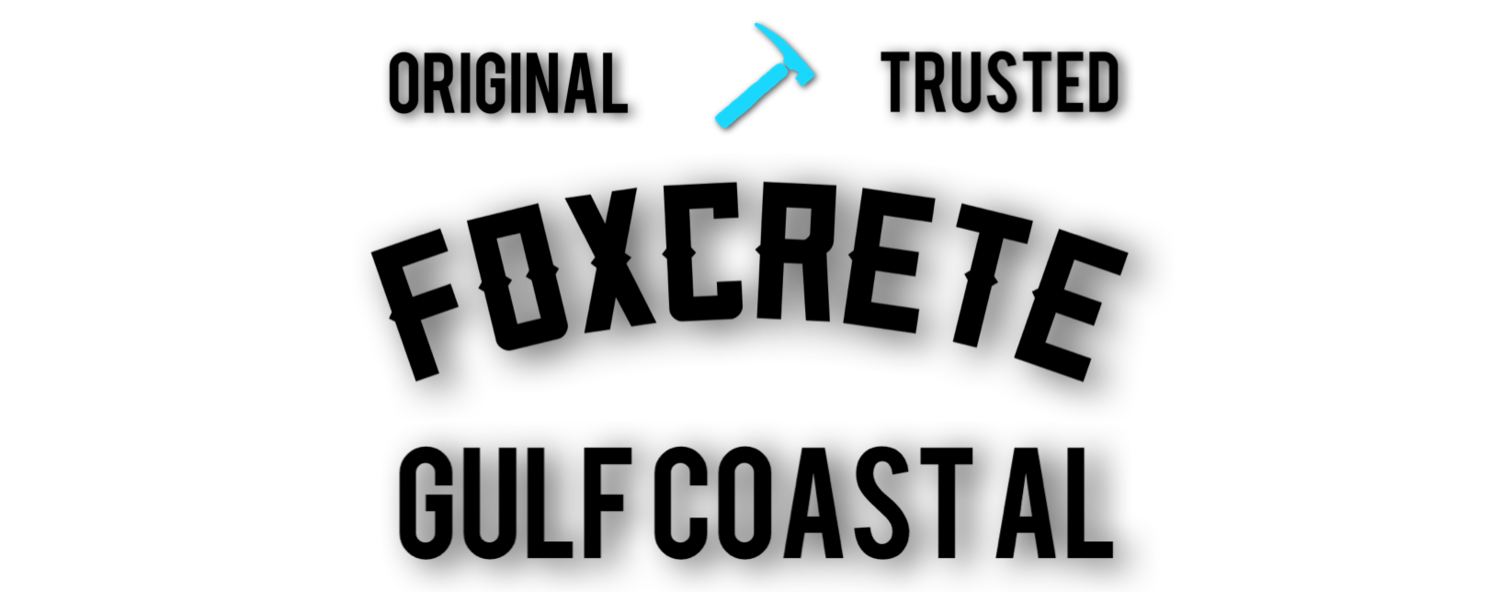
ONE Year Limited Warranty
“One Year Limited Warranty" is included with your project, the warranty is valid for one year from the time of service on projects with added bar reinforcement. (Reinforcement does not include fiber.) Any treatment methods and scheduling are at the discretion of the contractor. Subcontractor work is not warrantied unless expressly written.
Warranty does not cover acts of God or damages caused directly from abuse outside of normal usage. Foxcrete Construction does not warrant chips, flaking, spalling, or surface wear in any way.
Cracks:
Observation - Exterior Concrete: Exterior sidewalks, porches, patios, driveway, etc - are cracked.
Standard- Random cracking of exterior concrete will occur and is to be expected at any point of its lifetime. If settling causes cracks at any point that exceed 1/4" of an inch in the first year, it will be considered for treatment.
Builder's Responsibility- The builder is responsible for correcting only those cracks that exceed the standard. An appropriate joint or crack filler can be used and is acceptable for a crack up to 1/2 inch in width or vertical displacement.
Homeowner Responsibility- Smaller cracks can be filled with waterproof concrete caulk. While this may reduce the appearance of the crack, it should be noted that there will be a color and texture variance between the original concrete and the caulking.
Discussion- Driveways, patios, and sidewalks should have expansion and contraction joints. These joints help guide the natural cracks that will develop. Regularly, cracks will exit or form outside of control joint locations. Random cracking is to be expected.
Puddles:
Observations- Low spots in the concrete in which water pockets appear, not caused by conditions in the background.
Standard- No measurable water depth exceeding 1/2" is acceptable for more than 24 hours after the rain had stopped. This standard doesn't apply to stamped or decorative surfaces.
Builder's Responsibility - The builder will correct to meet the standard. Color and texture variations are to be expected.
Stains:
Observation- Exterior concrete is stained.
Standard- Exterior concrete will stain.
Builder’s Responsibility- None.
Homeowner’s Responsibility- The homeowner should take precautions to prevent petroleum-based products, solvents, and paint from coming in contact with exterior concrete surfaces. By keeping stain remover on hand, many stains can be made less visible if treated immediately. (It should be noted, however, that these products may also weaken the surface of the concrete.)
Discussion- Concrete is a porous, natural product that absorbs such substances as petroleum-based products, solvents, and paints. When a liquid enters the concrete, it can seep from top to bottom or bottom to top (a stain may appear from underneath the surface, even if nothing was spilled upon the top surface of the concrete). It should also be expected that mud from the construction site could get into the porous surface of the concrete. This is beyond the control of the builder and falls within the parameters of this standard.
Other Considerations
Another characteristic of concrete that is difficult to control is color variations. Concrete itself can have varying colors due to the different types of sand and aggregates used in the mixture. Color variations can also be caused by admixtures such as calcium chloride, (the most commonly used admixture to accelerate the curing process of concrete and to reduce the effects of freezing). If concrete is poured on different days, and the previously poured concrete has had time to cure a bit, color differences will be apparent. Different brands and types of concrete may contain many varieties of sand, cement, admixtures, and aggregate that will result in color variations in the finished concrete. When repairs are made, the concrete used as a filler must be extremely dry to prevent shrinkage. This almost always results in a repair patch that is darker in color than the existing concrete. Because of the previous explanations for color variations, it is to be expected that whenever a repair is made, it is nearly impossible to match the colors of concrete. Because the curing of concrete is a chemical process and can take up to one year to complete, changes in size and strength are to be expected. It is very difficult to control the effects of water evaporation, air bubbles within the concrete, air humidity, and wind. Some chemical processes are only controllable and are the responsibility of the homeowner. Chemicals, such as lawn fertilizer, can also chemically attack the surface of the concrete, resulting in spalling, scaling, and pitting. Until concrete has cured, it can not withstand extreme weight such as moving vans, school buses, or garbage trucks. It is especially important to limit the amount of weight that is placed upon concrete during the first year because it needs sufficient time to cure and gain strength.
Exclusions:
Warranty exclusions of the following items:
Excludes any displacement or chipping between new and old or existing concrete or pavements
Sealers
Drains, Pipes, Or Downspouts
Concrete Patches or Repairs
Overlay Products
Epoxies
Coatings of Any Type
Special Finishes
Landscaping
Asphalt Repairs
Painting or Caulking
Woodwork
Firepits, Benches, and Pergolas
Concrete Work Designed by Others, Subject to Heavy or Commercial Use, Approaches,
Aprons, Shop Floors, or Work Done in Accordance to Outside Source/Private Designs or Mixes.
Concrete Coloration
